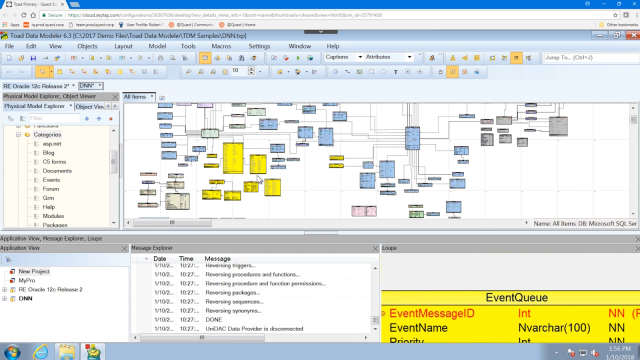Using categories to organize your models in Toad Data Modeler
 04:08
04:08
Related videos
Quest Empower 2021 Post Event
01:02
Using the external dependencies explorer in Toad Data Modeler
Learn how to use the external dependencies explorer in Toad Data Modeler.
04:44
Introduction to Toad Data Modeler
Learn how to create high-quality data models in this introduction to Toad Data Modeler.
02:46
Introducing Toad Data Modeler
Toad Data Modeler is a simple-to-use data modeling software tool for database design, data structure modification and database documentation that works across a...
01:26
Importing and exporting models in Toad Data Modeler
Learn how to import and export data models in Toad Data Modeler from Quest, the easy-to-use, cross-platform database modeling software.
03:50
How to use the Sync and Convert Wizard in Toad Data Modeler
Learn how to use the Sync and Convert Wizard in Toad Data Modeler.
02:49
How to use external objects in Toad Data Modeler
Learn how to use external objects in Toad Data Modeler.
04:27
How to reverse engineer database structures with Toad Data Modeler
Learn how to manage database connections and reverse engineer existing databases into new models with Toad Data Modeler, the cross-platform database modeling to...
03:53
How to reverse engineer and manage models in Toad Data Modeler
Learn how to reverse engineer and manage models in Toad Data Modeler.
04:35
How to generate SQL code in Toad Data Modeler
Learn how to generate SQL code for your data models in Toad Data Modeler, the cross-platform database modeling tool.
05:12
How to generate DDL scripts and reports in Toad Data Modeler
Learn how to generate DDL scripts and reports in Toad Data Modeler.
01:52
How to create a model in Toad Data Modeler
Learn how to create a model in Toad Data Modeler.
04:17
